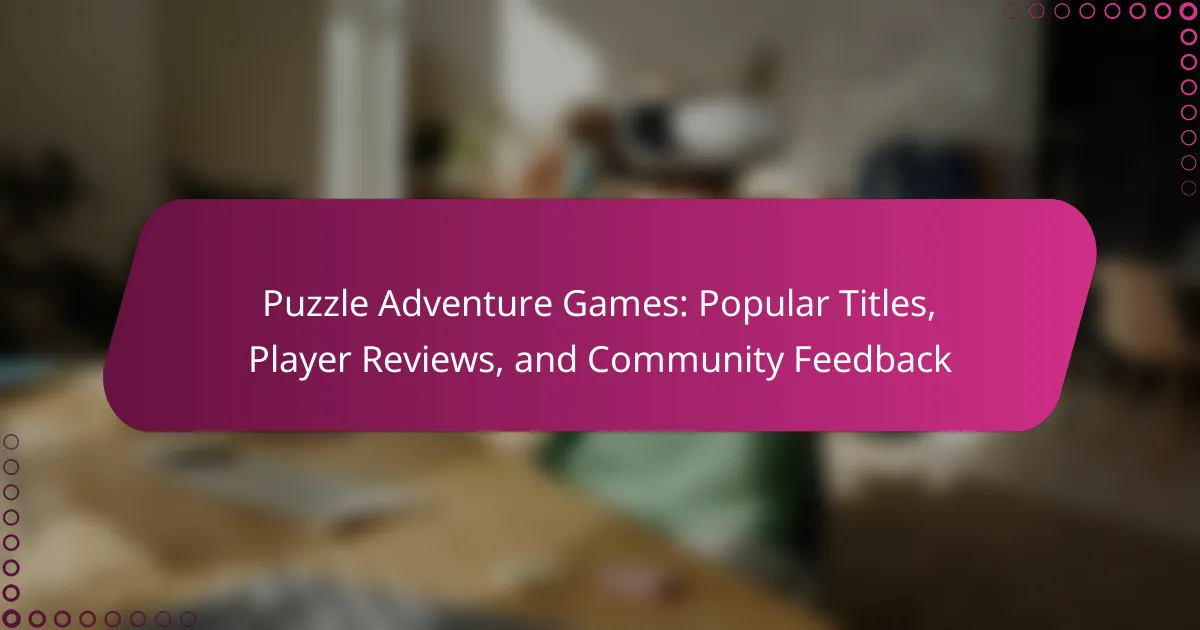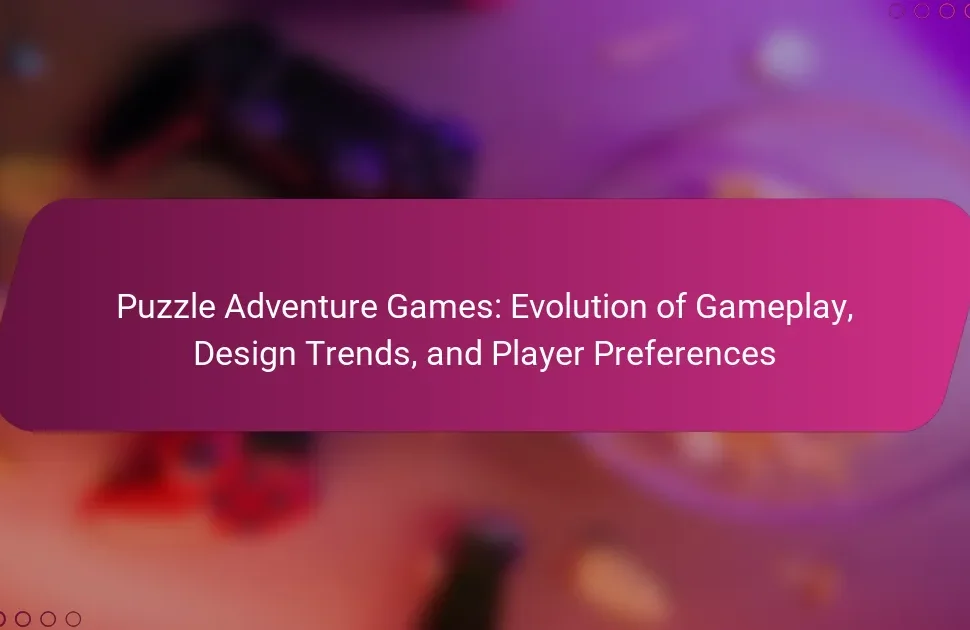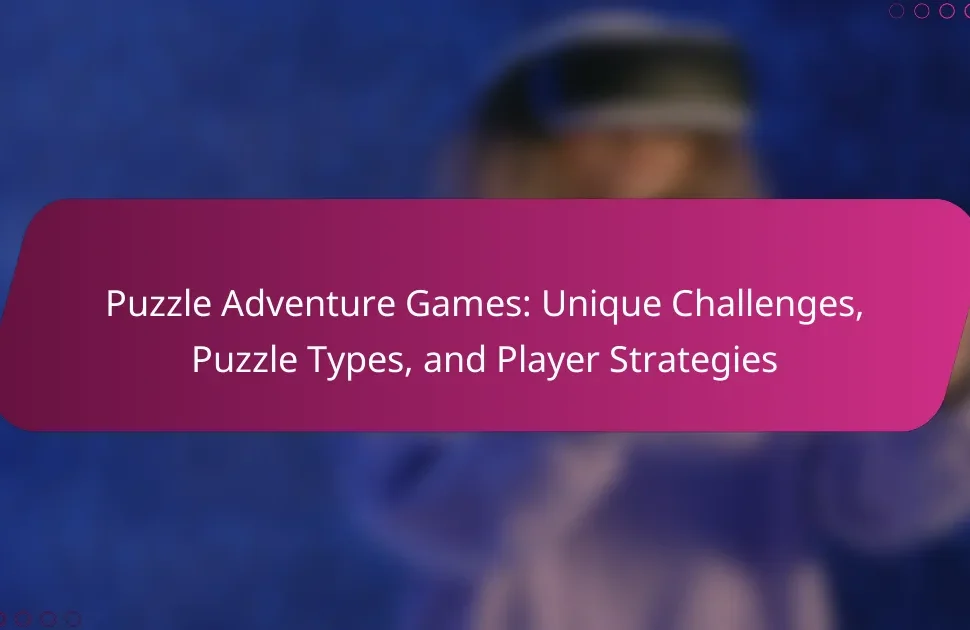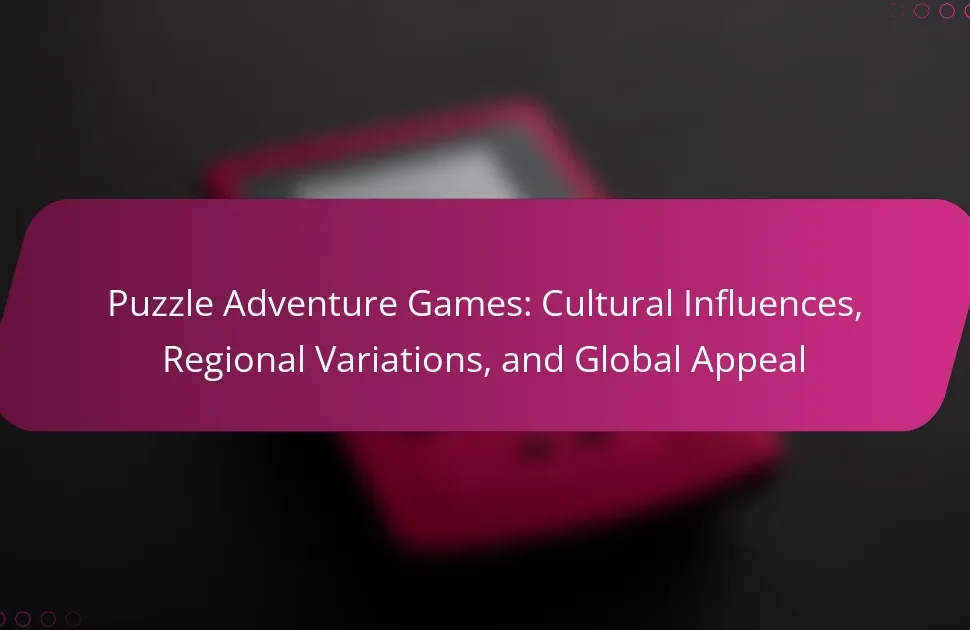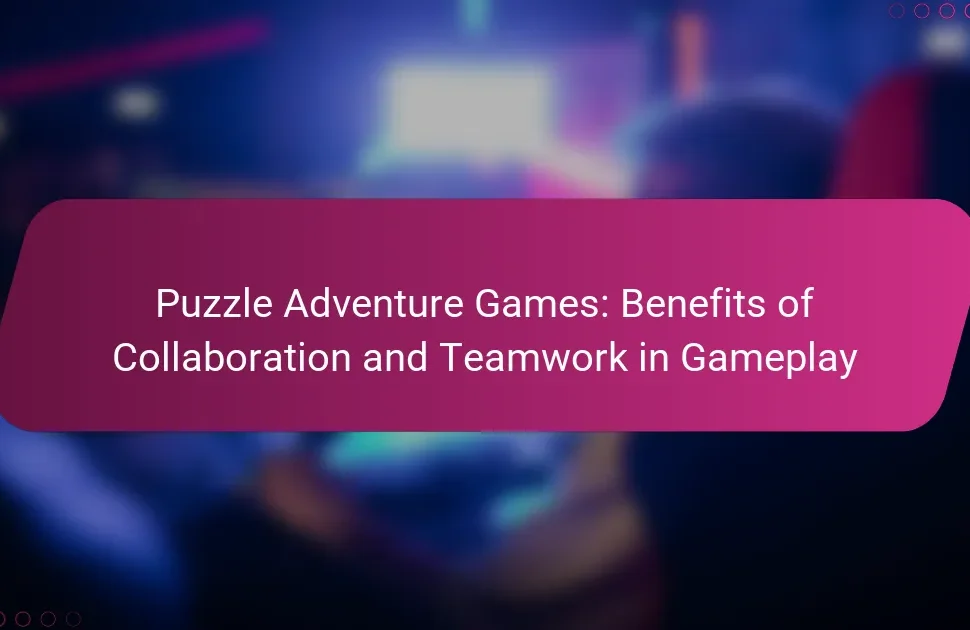Puzzle adventure games offer players engaging narratives and intricate puzzles that challenge problem-solving skills. This article explores popular titles like “The Witness 2” and “Myst Remastered,” highlights player reviews and community feedback, and discusses challenges faced by players. Additionally, it examines how community engagement shapes game development and enhances the overall gaming experience.

What are the key characteristics of puzzle adventure games?
Puzzle adventure games feature immersive storytelling, intricate puzzles, and exploration elements. Key characteristics include engaging narratives, challenging problem-solving, and interactive environments. Players often appreciate the blend of logic and creativity required to progress through these games. Popular titles like “The Legend of Zelda: Breath of the Wild” exemplify these traits, showcasing expansive worlds and captivating storylines. Community feedback frequently highlights the satisfaction derived from solving complex puzzles, enhancing the overall gaming experience.
How do puzzle mechanics enhance gameplay?
Puzzle mechanics enhance gameplay by creating challenges that stimulate critical thinking and problem-solving skills. They engage players by providing a sense of accomplishment upon solving intricate puzzles. Popular titles like “The Witness” and “Portal” showcase these mechanics, integrating them seamlessly into their narratives. Player reviews often highlight the satisfaction derived from overcoming difficult puzzles, fostering a strong sense of community as players share solutions and strategies. This collaborative aspect adds depth to the gaming experience, making puzzle mechanics a vital component of adventure games.
What role does storytelling play in puzzle adventure games?
Storytelling is crucial in puzzle adventure games as it enhances player engagement and immersion. A compelling narrative motivates players to solve puzzles and explore the game world. Titles like “The Witness” and “Grim Fandango” exemplify this, weaving intricate stories that deepen the gameplay experience. Player reviews often highlight how narrative elements create emotional connections, making challenges feel meaningful. Community feedback frequently discusses the balance between story and puzzles, emphasizing that a well-crafted plot can elevate the overall enjoyment of the game.
Which platforms are most popular for puzzle adventure games?
The most popular platforms for puzzle adventure games include PC, Nintendo Switch, PlayStation, Xbox, and mobile devices. Each platform offers unique titles and experiences, catering to various player preferences. For example, PC often features indie games, while consoles provide a mix of exclusive and cross-platform titles. Mobile devices excel in accessibility and casual gameplay, attracting a broad audience. Player reviews highlight the engaging narratives and challenging puzzles that define this genre across these platforms.

What are some of the most popular puzzle adventure games in 2025?
In 2025, popular puzzle adventure games include “The Witness 2,” “Myst Remastered,” and “Return of the Obra Dinn.” These titles feature intricate puzzles, immersive storytelling, and strong community engagement. Player reviews highlight the innovative gameplay and challenging mechanics, contributing to their popularity. Community feedback praises the art design and atmosphere, enhancing the overall experience.
How do player reviews shape the perception of these games?
Player reviews significantly influence the perception of puzzle adventure games by shaping community expectations and guiding potential players. Positive reviews often highlight engaging storylines and challenging puzzles, attracting new players. Conversely, negative feedback can deter interest, emphasizing flaws like poor mechanics or lack of innovation. Community discussions around these reviews foster a collective understanding of game quality, impacting sales and player engagement. Ultimately, player feedback serves as a crucial metric for developers, driving improvements and updates based on user experiences.
What common themes emerge from player feedback?
Player feedback on puzzle adventure games often highlights themes of engaging storytelling, challenging puzzles, and community involvement. Players appreciate immersive narratives that enhance gameplay. They often mention the satisfaction derived from solving intricate puzzles, which adds to the overall experience. Additionally, community feedback emphasizes the importance of updates and developer responsiveness, showcasing a desire for ongoing engagement and improvements.

Which unique features distinguish top titles in the genre?
Top titles in the puzzle adventure genre stand out through unique storytelling, intricate puzzles, and immersive environments. They often feature strong character development, innovative gameplay mechanics, and community-driven content. For instance, games like “The Witness” emphasize environmental storytelling, while “Myst” combines exploration with mind-bending challenges. These elements create a rich player experience that fosters engagement and discussion within the gaming community.
How do art styles impact player engagement?
Art styles significantly enhance player engagement in puzzle adventure games through immersive visuals and thematic consistency. Unique art styles create distinctive atmospheres that resonate with players, fostering emotional connections. For example, vibrant colors and intricate designs can captivate players, while minimalist aesthetics may promote focus on gameplay mechanics. Players often express their preferences in reviews, indicating that art style influences their overall satisfaction and willingness to recommend a game. Engaging art styles can lead to increased community involvement, as players share their experiences and interpretations, further enriching the game’s ecosystem.
What innovative gameplay elements are being introduced?
Innovative gameplay elements in puzzle adventure games include interactive environments, dynamic storytelling, and cooperative multiplayer features. These elements enhance player engagement and create immersive experiences. Many titles now incorporate augmented reality, allowing players to solve puzzles in real-world settings. Additionally, adaptive difficulty adjusts challenges based on player performance, ensuring a tailored experience.

What are the challenges players face in puzzle adventure games?
Players face challenges in puzzle adventure games such as complex puzzles, time constraints, and evolving narratives. These obstacles can lead to frustration but also enhance engagement.
Complex puzzles require critical thinking and problem-solving skills, often demanding players to connect clues across different game environments. Time constraints can add pressure, making it harder to think clearly. Evolving narratives may introduce unexpected twists, requiring players to adapt their strategies continuously.
Additionally, players often encounter difficulty in balancing exploration and puzzle-solving. This balance is crucial for maintaining immersion and enjoyment. Community feedback highlights these challenges, emphasizing the need for well-designed difficulty curves to keep players engaged without overwhelming them.
How do difficulty levels affect player experience?
Difficulty levels significantly shape player experience by influencing engagement, challenge perception, and satisfaction. Players often seek varying levels of difficulty to match their skills and preferences. For example, casual gamers may prefer easier levels for enjoyment, while hardcore players may gravitate towards challenging puzzles that test their limits.
Research indicates that balanced difficulty enhances player retention and encourages exploration. A well-designed difficulty curve allows players to gradually develop skills, leading to a sense of accomplishment. Conversely, overly challenging levels can lead to frustration and disengagement.
Community feedback frequently highlights the importance of customizable difficulty settings, enabling players to tailor their experiences. This adaptability fosters inclusivity, appealing to a broader audience while maintaining the game’s integrity.
In summary, difficulty levels in puzzle adventure games directly impact player enjoyment, skill development, and overall satisfaction.
What common frustrations do players express in reviews?
Players often express frustrations with puzzle adventure games related to difficulty spikes, unclear instructions, and technical issues. Many reviews highlight the challenge of puzzles that feel unbalanced, where some are too easy while others are overly complex. Additionally, players frequently mention a lack of hints or guidance, leading to frustration when stuck. Technical glitches, such as bugs or crashes, can further detract from the gaming experience, causing players to abandon titles they otherwise enjoy.

What is the significance of community feedback in shaping game development?
Community feedback is crucial in shaping game development as it directly influences design choices and player satisfaction. Developers of puzzle adventure games often rely on player reviews to identify strengths and weaknesses. This feedback can lead to updates that enhance gameplay mechanics, improve storylines, and fix bugs. Engaging with the community fosters a sense of belonging and loyalty among players, which can increase a game’s longevity. Additionally, unique insights from players can inspire innovative features that set a game apart in a competitive market.
How do forums and social media influence game updates?
Forums and social media significantly influence game updates by facilitating direct communication between developers and players. These platforms allow players to share feedback, discuss features, and report bugs, which developers often consider for future updates.
Community feedback shapes game balance, introduces new content, and addresses player concerns. For example, player reviews on forums can highlight desired changes, prompting developers to prioritize specific updates. Additionally, social media trends can create buzz around certain features, influencing developers’ decisions on what to enhance or modify.
Engagement on these platforms fosters a sense of community, encouraging developers to be more responsive to player needs. This interaction can lead to a more dynamic gaming experience, as updates align closely with player expectations.
What role do user-generated content and mods play?
User-generated content and mods significantly enhance puzzle adventure games by fostering community engagement and creativity. Players contribute new levels, challenges, and storylines, enriching the gameplay experience. This collaborative effort often leads to increased longevity and replayability of popular titles. Community feedback through reviews and discussions helps developers refine game mechanics and address player concerns, resulting in improved user satisfaction.

How can players optimize their experience with puzzle adventure games?
Players can optimize their experience with puzzle adventure games by focusing on strategy, community engagement, and resource management. Understanding game mechanics enhances problem-solving skills and enjoyment. Joining forums or groups provides insights and tips from experienced players. Additionally, managing in-game resources effectively can lead to smoother gameplay and successful completion of challenges.
What are some best practices for solving puzzles effectively?
To solve puzzles effectively, practice strategic thinking and patience. Break down complex puzzles into smaller sections, identify patterns, and utilize hints when necessary. Engage with community forums to gain insights and tips from experienced players. Regularly playing various puzzle adventure games enhances problem-solving skills and keeps the mind sharp.
Which strategies can enhance enjoyment and engagement?
To enhance enjoyment and engagement in puzzle adventure games, focus on immersive storytelling, challenging puzzles, and community interaction. Engaging narratives deepen player investment, while well-designed puzzles provide satisfying challenges. Community feedback fosters a sense of belonging and encourages collaboration among players.
